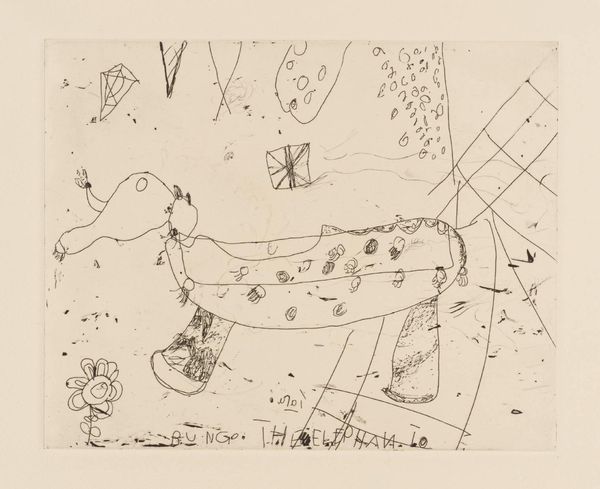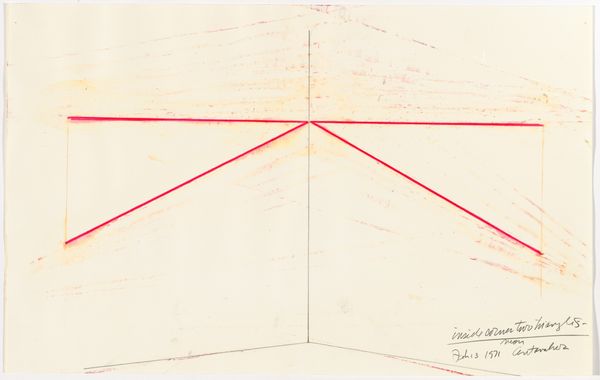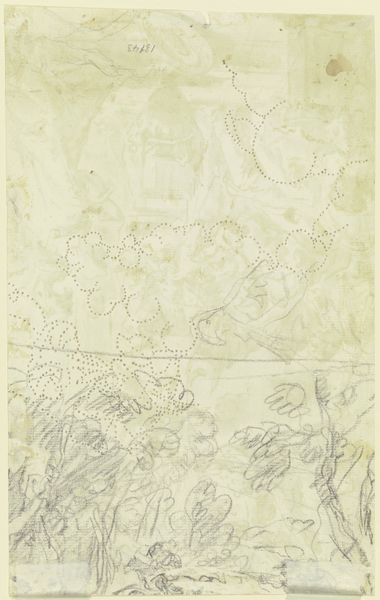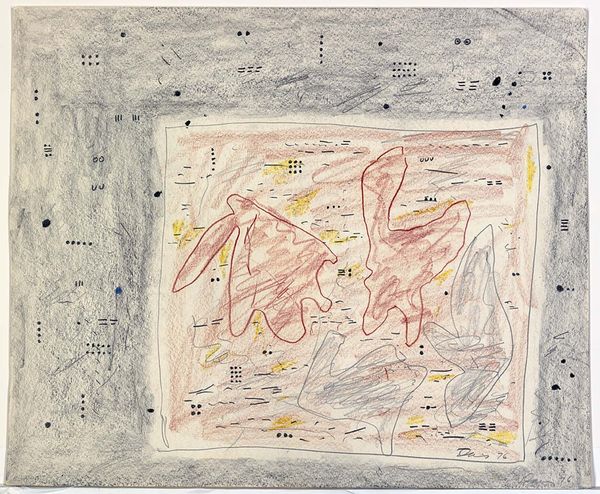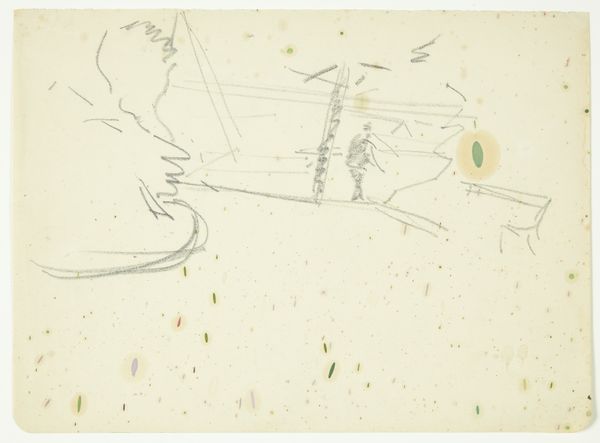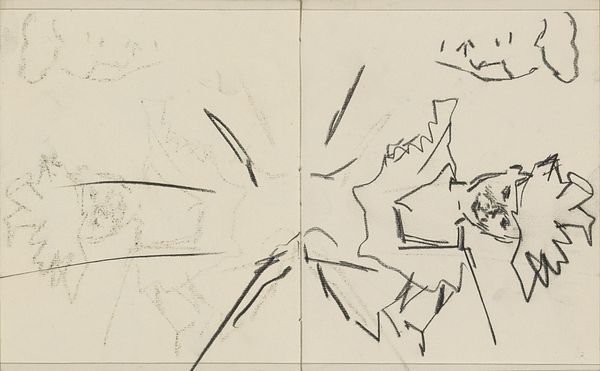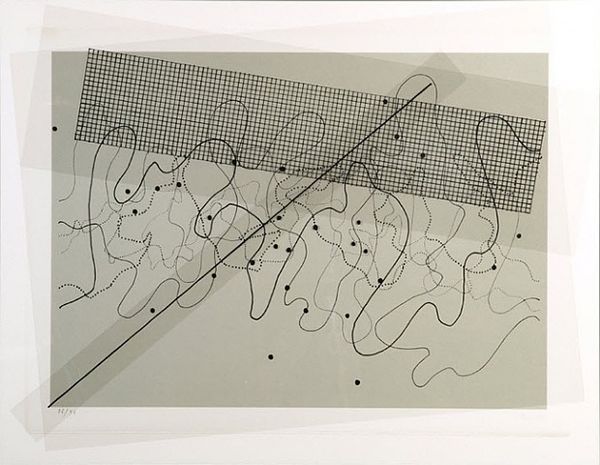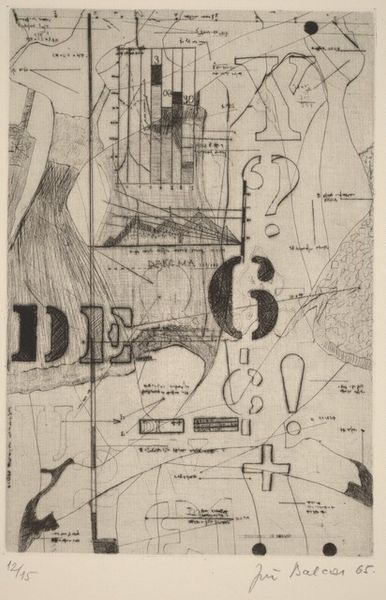
drawing, paper, ink
#
drawing
#
paper
#
ink
#
coloured pencil
#
geometric
#
black-mountain-college
#
abstraction
#
line
Copyright: John Cage,Fair Use
Editor: This is *Dereau No. 11* created by John Cage in 1982, a drawing composed of ink and colored pencil on paper. I'm struck by the quietness of it. The colors are muted, almost faded, and the composition feels so open, almost incomplete. What do you see in this piece? Curator: I see a fascinating intersection of chance and intention. Cage was deeply invested in exploring the subconscious. Look at how these seemingly random lines create patterns, echoing forgotten maps, astronomical charts, perhaps even ancestral markings. Do you see the repetition in some of the shapes, how they recall specific cultural symbols, almost like a visual mantra? Editor: I notice the geometric shapes. Are you saying these are references to something specific? I was interpreting them more as pure forms, abstract shapes in relation to each other. Curator: Consider the circle and the square. Throughout history, the circle represents the eternal, the cosmos, the divine. The square signifies the earthly, the material world, structure. Cage's juxtaposition invites contemplation of the relationship between these realms. Doesn’t it remind you of the Renaissance ideal of squaring the circle, uniting heaven and earth? Editor: Oh, I see. So, it’s less about pure abstraction and more about a dialogue between recognizable symbols and what they signify culturally. I didn't consider it that way. Curator: Precisely. And his use of pale inks and pencils evokes a sense of ephemerality, suggesting the transient nature of meaning itself. Cage, in a way, archives universal human memory in each seemingly random mark. Editor: I learned how important cultural symbols are to even abstract-looking pieces, and how one can analyze those to give artworks an underlying narrative that is so often invisible. Curator: Absolutely. Understanding the symbolic language in art helps us connect with past cultures and unlock hidden layers of meaning.
Comments
No comments
Be the first to comment and join the conversation on the ultimate creative platform.


